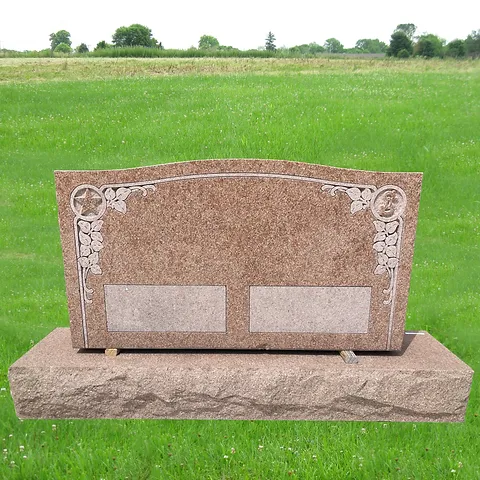Historical Significance of Lawn Monuments in Cemetery Design and Planning
Lawn monuments have played a significant role in cemetery design and planning, especially in the United States, where they became a popular feature in the 19th and 20th centuries. Their introduction marked a departure from the more traditional and ornate grave markers that dominated earlier burial practices, favoring simplicity, uniformity, and a more egalitarian approach to memorialization. The rise of lawn cemeteries, often referred to as memorial parks, can be traced back to the mid-1800s when the rural cemetery movement took hold. Prior to this, graveyards were typically small and crowded, with each headstone being unique in design, often large, and sometimes extravagant. As urban areas grew, however, the need for more efficient and aesthetic burial spaces led to the creation of large, landscaped cemeteries on the outskirts of cities. These cemeteries were designed to be more park-like, with rolling lawns and trees, and were intended not just as burial grounds but also as places for quiet reflection and leisure. Lawn monuments, which were smaller, simpler, and usually placed flat on the ground, became an ideal solution for these expansive burial spaces.

The simplicity of the design reflected the democratic ideals of the time, offering a more equal approach to memorialization. The standardization of grave markers helped to create a sense of order and harmony, ensuring that the focus of the cemetery was on the landscape rather than on individual memorials. This was a stark contrast to earlier cemetery designs, where elaborate gravestones or mausoleums could easily overshadow the natural beauty of the surroundings. In terms of cemetery planning, lawn monuments also allowed for more efficient land use. Because these markers were flush with the ground, it was possible to maximize the number of burial sites within a given area. The use of grass-covered lawns between the monuments also created a sense of openness and tranquility, and helped reduce maintenance costs. Unlike traditional cemeteries, where gravestones might need to be moved or cleaned regularly, the simplicity of lawn monuments made them easier to maintain, as they did not require much upkeep beyond basic mowing and occasional care. Additionally, lawn cemeteries often introduced a shift toward more nature-focused burial practices.
The emphasis on natural beauty and peaceful surroundings aligned with a growing cultural appreciation for the outdoors, as seen in other movements like the rural cemetery movement. These cemeteries were often landscaped to include meandering paths, trees, and water features, which enhanced the experience of visiting the gravesites and reflected the belief that death was part of the natural cycle of life. Lawn monuments also played a role in standardizing memorial practices across different socio-economic groups. By adopting simpler designs, cemetery planners were able to offer a more accessible and affordable option for families, especially those from lower-income backgrounds. In this way, lawn monuments helped make memorialization more universally accessible, aligning with the broader ideals of equality and simplicity that characterized the American landscape in the late 19th and early 20th centuries. Lawn monuments Sydney have had a profound impact on cemetery design, reflecting broader societal values of simplicity, equality, and a connection to nature. Their introduction not only reshaped the physical appearance of cemeteries but also influenced the way people thought about death and memorialization.
